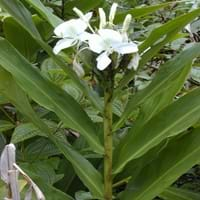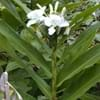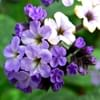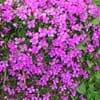Life Span
Perennial
Perennial
Type
Tender Perennial
Perennial
Origin
Southern Asia, Southeastern Asia, India, Nepal, China
Hybrid origin
Types
Orange bottlebrush ginger, Kahili ginger, Cream garland-lily
Victoria Rhubarb
Colorado Red Rhubarb
Turkish Rhubarb
Number of Varieties
Not Available
Habitat
Forest edges, Moist Soils, Riverbanks, Swamps, Wet lands
gardens, Grassland, Humid climates, Tropical regions, Urban areas
USDA Hardiness Zone
7-15
5-8
Sunset Zone
H1, H2, 8, 9, 14, 15, 16, 17, 19, 20, 21, 22, 23, 24
2b, 3a, 3b, 4, 5, 6, 7, 14, 15, 16, 17
Habit
Upright/Erect
Clump-Forming
Flower Color
White, Yellow
Light Pink
Flower Color Modifier
Bicolor
Not Available
Fruit Color
Red, Orange
Burgundy
Leaf Color in Spring
Green, Light Green
Green, Dark Red
Leaf Color in Summer
Green, Dark Green
Green, Dark Red
Leaf Color in Fall
Green, Dark Green
Green, Dark Red
Leaf Color in Winter
Light Green
Light Green
Leaf Shape
Pinnate
Compound
Plant Season
Spring, Summer, Fall
Spring, Summer, Fall
Sunlight
Partial Sun, Partial shade
Full Sun, Partial Sun
Type of Soil
Loam
Clay, Loam
The pH of Soil
Acidic, Neutral
Acidic, Neutral, Alkaline
Soil Drainage
Average
Average
Bloom Time
Late Spring, Early Summer, Summer, Late Summer
Summer, Late Summer
Tolerances
Drought
Drought
Where to Plant?
Container, Ground
Ground
How to Plant?
Divison, Seedlings
Stem Planting
Plant Maintenance
Medium
Medium
Watering Requirements
Average Water Needs, Requires consistently moist soil, Water Deeply
Do Not over Water, Requires regular watering, Use Mulches to help prevent water loss during hot and windy weather, Water Deeply
In Summer
Lots of watering
Lots of watering
In Spring
Moderate
Moderate
In Winter
Average Water
Average Water
Soil pH
Acidic, Neutral
Acidic, Neutral, Alkaline
Soil Type
Loam
Clay, Loam
Soil Drainage Capacity
Average
Average
Sun Exposure
Partial Sun, Partial shade
Full Sun, Partial Sun
Pruning
Remove damaged leaves, Remove dead branches, Remove dead leaves, Remove dead or diseased plant parts
Remove damaged leaves, Remove dead branches, Remove dead leaves
Fertilizers
All-Purpose Liquid Fertilizer, Fertilize every week
All-Purpose Liquid Fertilizer
Pests and Diseases
Red blotch
Red blotch
Plant Tolerance
Drought
Drought
Flower Petal Number
Single
Not Available
Fragrant Bark/Stem
Yes
No
Foliage Texture
Bold
Coarse
Foliage Sheen
Matte
Glossy
Attracts
Ants, Butterflies, Hummingbirds
Not Available
Allergy
Not Available
Skin irritation
Aesthetic Uses
Showy Purposes
Showy Purposes
Beauty Benefits
Not Available
Not Available
Environmental Uses
Air purification
Air purification
Medicinal Uses
Abdominal Disease, Anthelmintic, Antirheumatic, Carminative, Chest pain, Febrifuge, Joint pain, Stomachic, Tonic, Tonsillitis
Not Available
Part of Plant Used
Flowers, Root, Seeds, Stem
Whole plant
Other Uses
Garland, Paper pulp, Used as essential oil, Used for its medicinal properties, Used in paper industry
Culinary use, Used as Ornamental plant
Used As Indoor Plant
No
No
Used As Outdoor Plant
Yes
Yes
Garden Design
Container, Cutflower, Edible, Feature Plant, Houseplant, Mixed Border, Tropical
Feature Plant, Mixed Border
Botanical Name
HEDYCHIUM coronarium
RHEUM 'Ace of Hearts'
Common Name
Butterfly Ginger, Butterfly Lily, White Garland Lily
Ace of Hearts Ornamental Rhubarb, Ornamental Rhubarb
In Hindi
Butterfly Ginger Plant
सजावटी प्रकार का फल
In German
Schmetterling Ingwerpflanze
Ornamental Rhabarber
In French
Papillon Ginger Plante
rhubarbe ornementale
In Spanish
Planta de jengibre de la mariposa
Ornamental de ruibarbo
In Greek
Πεταλούδα Τζίντζερ φυτών
καλλωπιστικά Ραβέντι
In Portuguese
Borboleta Ginger planta
ornamental ruibarbo
In Polish
Butterfly Ginger roślin
ozdobne Rabarbar
In Latin
Gingiber Plantae Gloria
decentius Rhubarb
Phylum
Magnoliophyta
Tracheophyta
Class
Liliopsida
Not Available
Order
Zingiberales
Caryophyllales
Family
Zingiberaceae
Polygonaceae
Clade
Angiosperms, Commelinids, Monocots
Angiosperms, Core eudicots, Eudicots
Tribe
Zingibereae
Not Available
Subfamily
Zingiberoideae
Not Available
Importance of Butterfly Ginger and Ornamental Rhubarb
Want to have the most appropriate plant for your garden? You might want to know the importance of Butterfly Ginger and Ornamental Rhubarb. Basically, these two plants vary in many aspects. Compare Butterfly Ginger and Ornamental Rhubarb as they differ in many characteristics such as their life, care, benefits, facts, etc. Every gardener must at least have the slightest clue about the plants he wants to plant in his garden. Compare their benefits, which differ in many ways like facts and uses. The medicinal use of Butterfly Ginger is Abdominal Disease, Anthelmintic, Antirheumatic, Carminative, Chest pain, Febrifuge, Joint pain, Stomachic, Tonic and Tonsillitis whereas of Ornamental Rhubarb is Not Available. Butterfly Ginger has beauty benefits as follows: Not Available while Ornamental Rhubarb has beauty benefits as follows: Not Available.
Compare Facts of Butterfly Ginger vs Ornamental Rhubarb
How to choose the best garden plant for your garden depending upon its facts? Here garden plant comparison will help you to solve this query. Compare the facts of Butterfly Ginger vs Ornamental Rhubarb and know which one to choose. As garden plants have benefits and other uses, allergy is also a major drawback of plants for some people. Allergic reactions of Butterfly Ginger are Not Available whereas of Ornamental Rhubarb have Skin irritation respectively. Having a fruit bearing plant in your garden can be a plus point of your garden. Butterfly Ginger has no showy fruits and Ornamental Rhubarb has showy fruits. Also Butterfly Ginger is flowering and Ornamental Rhubarb is not flowering . You can compare Butterfly Ginger and Ornamental Rhubarb facts and facts of other plants too.




